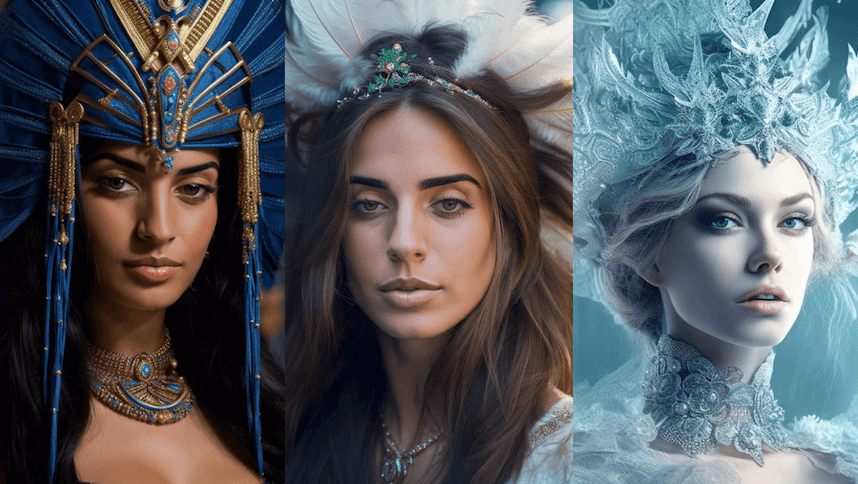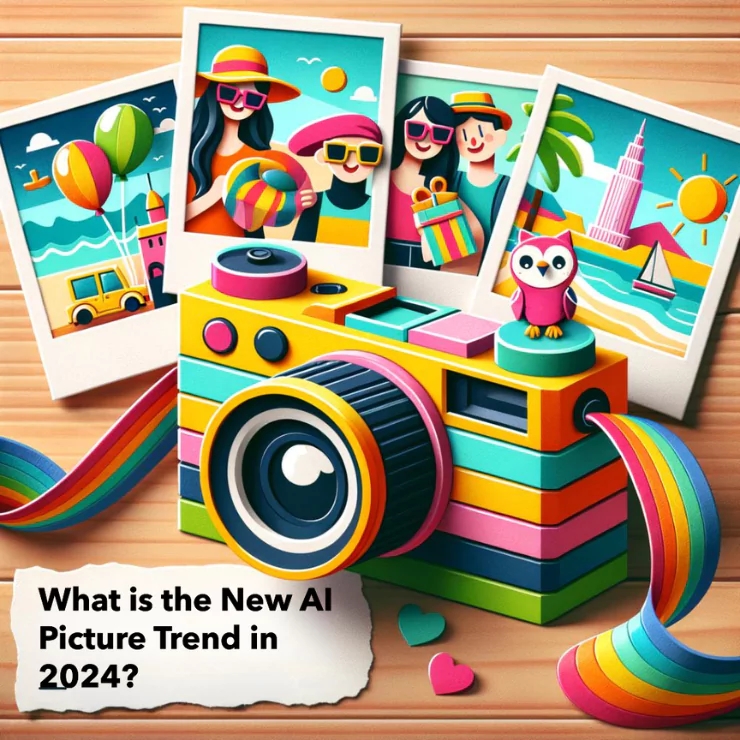In the ever-evolving world of photography, technology has continuously played a critical role in shaping its course. Over the decades, we’ve seen advancements that have moved this visual art form from simple daguerreotypes in its early stages through photographic film and Polaroids, into the realm of digital and now, into the epoch of artificial intelligence (AI). The imminent union of AI and photography promises unprecedented leaps in quality, efficiency, and even creativity with AI photo editor.
The Revolution of AI in Photography
Our journey begins by looking at the historical progress of photography technology which gives us a deeper appreciation of how far we’ve come. What started with Louis Daguerre’s minutely detailed images recorded on a polished copper plate has now transformed into capturing and editing images in the cloud. The scalability of photography has been a marvel of sorts — from cumbersome equipment to the modern-day smartphone — putting the power of high-quality photography in the hands of virtually every person.
The pivot point in this journey is the introduction of AI in photography. These AI-driven transformations include computational photography, where devices can take multiple shots at different exposures and stitch them together for the best result, and AI-powered editing tools that change how we manipulate images.
A central aspect of this revolution is the emergence of AI photo editors. These smart software packages go beyond standard editing tools by leveraging algorithms and learning models to deliver functionality that creeps into the realm of professional photo editing.

Impact on Professional and Amateur Photographers
One of the main consequences of incorporating AI in photography is its impact on photographers, both professional and amateur. On the one hand, it democratizes high-quality photography, as complicated, time-consuming tasks shrink into single-click operations. Effects and manipulations that could take professionals hours to accomplish can suddenly be done by anyone. On the other hand, professionals can leverage these tools to streamline their workflows, allowing them to focus on creativity while the AI handles the rest.
Yet, it’s not just about cutting down the time or easing the method. AI in photography has also made creating impossible images possible. Picture this: a stunning portrait in dim light with no loss of detail or a grand shot of the milky way as if it were a stone’s throw away. These jaw-dropping photos are no longer figments of imagination but a quotidian reality, thanks to AI.
ZMO.AI: A Game Changer in AI Photo Editing
The presence and rapid development of AI are seen in many established tech giants’ offerings. Still, consider the wave of change brought about by ZMO.AI, a platform established as a paradigm. Defining the term in photography editing. ZMO.AI has come to redefine standards and expectations with its unique and revolutionary features.
Key Features of ZMO.AI
Among the offerings of this powerhouse platform, “ZMO AI Models,” “Magic Remove,” and “Background Remover and Changer,” stand out particularly, providing unmatched integrations targeted at driving efficiency and elevating existing models of photographic creativity.



ZMO AI Models
ZMO AI Models is an innovation that has placed a never-seen-before tool in the hands of photographers. With it, you can create paradisiacal visual effects effortlessly, pushing the boundaries of what is achievable in the field of photography.
Magic Remove
Next comes the Magic Remove offering that allows users to erase unwanted elements from any photo in seconds, resulting in visually flawless images. Gone are the days where unintentional photo bombers could ruin your perfect shot. With Magic Remove, picture transformation is streamlined and natural.
Background Remover and Changer
Even more astonishing is the Background Remover and Changer. This smart tool lets you alter or altogether eliminate existing backdrops in images replacing them with a backdrop of your choice or a neutral one.
Potential Challenges and Solutions
These advancements could potentially flood the market with high-quality photos, which could devalue professional photography in certain cases. However, photographers might discover new opportunities in this disruptive change, doing things that were not possible before or delivering work in record time. Photography may evolve to become a field more focused on managing and editing AI-created content, creating infinite opportunities for those willing to adapt and learn.
Indeed, the integration of AI in photography also presents another interesting dilemma—it can be both a boon and a bane. Speaking of challenges, one cannot ignore the potential ethical issues that might arise with the misuse of AI-powered photo editing. Take “deepfakes,” for instance, where AI is exploited to create hyper-realistic images or videos that can fool even the most eagle-eyed viewers. As a result, finding the balance and ensuring ethical use of these tools is of paramount importance.
The Next Steps for Photographers
So, how should photographers navigate this rapidly evolving landscape? It’s quite clear that staying abreast with developments and gaining knowledge in this space can go a long way. Photographers must explore avenues that AI opens up, to increase efficiency, to create novel photo effects or to provide new value propositions to their clients. To also mention, some of the more routine parts of their workflow can be automated, freeing their creativity and allowing them to focus more on their core artistic endeavours.



Conclusion: Embracing the Change
The intersection of technology and art has always been a catalyst for change and, often, a harbinger of the exceptional. This time, artificial intelligence plays the protagonist, changing the fortunes of the enduring craft of photography. With AI photo editors like ZMO.AI, concepts that were once thought impossible are now realities—creating a future filled with endless possibilities and promising transitions that preserve the artform’s beauty while making it even more exciting and accessible to everyone.
FAQS
1) What is ZMO.AI?
ZMO.AI is a powerful AI-based content engine with several unique features focused on revolutionizing how we process, edit, and create photographs.
2) What distinct features does ZMO.AI offer?
ZMO.AI has a range of innovative features, primarily the ZMO AI Models, Magic Remove, [Background Remover and Changer](https://imgcreator.zmo.ai/ai-designer), and several other tools that are constantly being developed and added to the platform.
3) How does ZMO.AI shape the future of photography?
By utilizing AI capabilities, ZMO.AI simplifies and augments the process of photo editing, making it efficient, intuitive, and versatile. It allows both professional photographers and hobbyists to create images of a quality that would have been hard to achieve or time-prohibitive in the traditional sense.
4) Can ZMO.AI be useful to beginners in photo editing?
Absolutely. One of the key advantages of ZMO.AI is that it caters to all levels of users. It’s designed with an intuitive interface and smart features that make complex photo editing tasks simple and easy—making it a powerful tool for beginners and professionals alike.
5) How does AI augment the capabilities of traditional photography technology?
AI in photography technology enhances the quality of images through advanced algorithms, automates routine tasks, thereby making the process more efficient. It also increases the range of creative possibilities, leading to a more enriched, experimental, and innovative exploration in photography.




